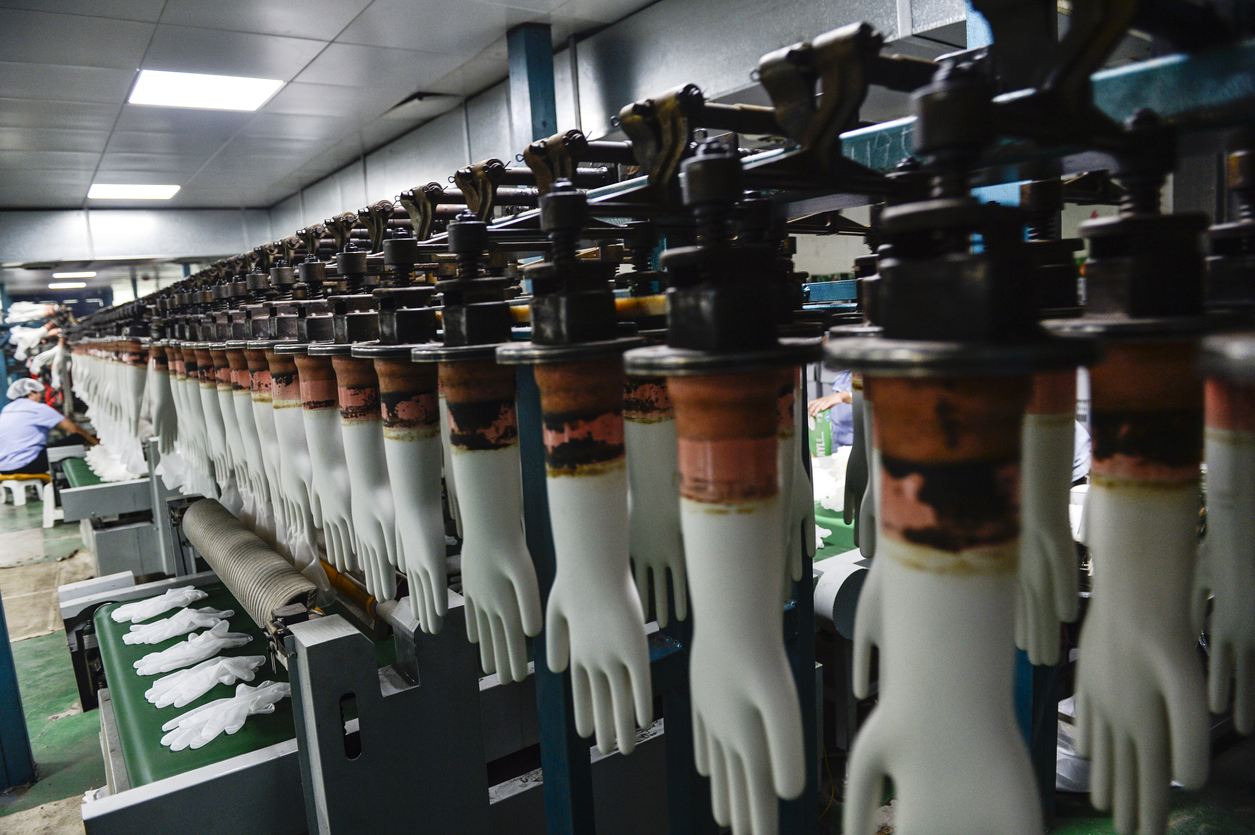Reports & Presentations
Economic Outlook Summary
MAY 2020

Rubber gloves production line in the rotation
OVERVIEW
As the unexpected COVID-19 outbreak slowdowns the world economy and decimates the stock markets, many businesses are left wondering what will happen next and, how to plan for the future.
With that in mind, CME’s economics team reviewed Canada’s economic performance up to March 2020 to understand what it means for manufacturers. This report provides an overview of what happened so far and, projections for what might happen next in the short and, long-term.
Based on historic patterns, emerging trends and an understanding of a deep and complex series of cause-and-effect relationships, CME’s projections also counter in the “known unknowns” – factors that we know will impact the economy, whether for good or for ill, but whose effect is far from clear. At this stage, decisions by governments, businesses and people can all have a critical impact on how Canada and the world will fair in pulling itself out of the recession caused by the coronavirus.
In May 2020, CME issued today a revised economic outlook updating analysis issued in March. The economic impact of the COVID-19 outbreak and life-saving physical distancing measures have been more devastating than predicted just a few short weeks ago. As a result, analysts from around the world have been downgrading their 2020 economic forecasts. CME is following suit.
MAY 2020 REPORT HIGHLIGHTS
- The IMF expects global real GDP to shrink by 3.0 per cent this year, the worst recession since the Great Depression. Assuming that the pandemic fades in the second half of 2020 and restrictions can be gradually lifted, the world economy will rebound with a 5.8 per cent expansion in 2021.
- The United States, one of the countries hardest hit by the pandemic, is forecast to see real GDP contract by 6.5 per cent in 2020, before rebounding with a 6.1 per cent gain in 2021.
- Canadian real GDP is forecast to fall by an even steeper 10.0 per cent this year, as oil-producing areas of the country also get hammered by an associated collapse in oil prices. The economy is projected to recover and expand by 7.5 per cent in 2021.
- Manufacturing activity is projected to suffer its biggest decline since 2009 this year, with output falling 13.0 per cent. Output is forecast to bounce back with a 7.0 per cent gain in 2021, in line with improving domestic and global economic conditions.
- All major manufacturing subsectors are forecast to see output shrink in 2020, with motor vehicle and parts posting the most precipitous decline and food experiencing the smallest drop.
- All provinces are expected to see a steep drop in output this year, with oil-dependent economies suffering the biggest declines. In addition, all provinces are forecast to see growth rebound in 2021, albeit not strong enough to fully recover from the damage done in 2020.
- Given that several key aspects of the virus are still unknown, including potential timelines for therapeutics and vaccines, worse outcomes are possible.
MARCH 2020 REPORT HIGHLIGHTS
- The coronavirus has pushed the world into a recession, with global GDP growth forecast to reach just 0.4 per cent this year.
- A collapse in growth in the second quarter will be followed by a rebound in economic activity over the second half of the year and into 2021. This will allow global real GDP growth to turn positive and reach 3.9 per cent next year.
- The United States economy is projected to contract by 3.1 per cent in 2020, before rebounding with a 3.4 per cent gain in 2021.
- Canadian real GDP is forecast to fall by an even steeper 3.8 per cent this year, with the economy recovering and expanding by 3.2 per cent in 2021.
- As an essential service, the Canadian manufacturing sector will continue operating through the government-imposed shutdowns. Even still, it is set to post its biggest decline in output since the global financial crisis this year, due to weak demand for certain products.
- Manufacturing output growth will bounce back in 2021, in line with improving domestic and global economic conditions.